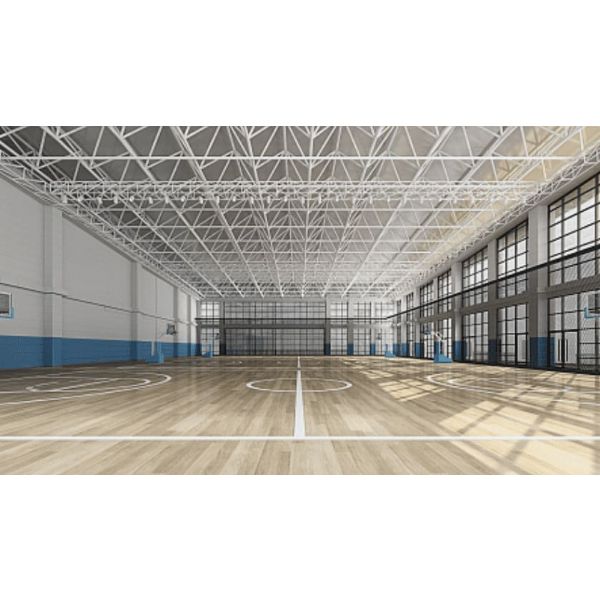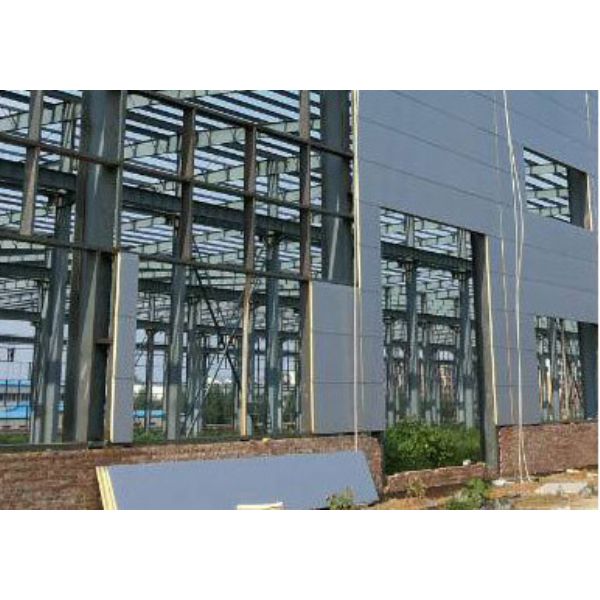Tubular steel buildings have emerged as one of the most efficient, durable, and visually appealing solutions in modern construction. Characterized by their use of hollow tubular sections instead of traditional I-beams, these structures combine strength, lightness, and sleek design—making them ideal for industrial, commercial, and even architectural projects. From warehouses and factories to sports arenas and agricultural facilities, tubular steel frames are redefining the way steel is used in contemporary building systems.
Introduction to Tubular Steel Buildings
In the evolving world of engineering and architecture, tubular steel buildings represent innovation and practicality working hand in hand. The term “tubular” refers to the hollow circular, square, or rectangular cross-sections of the steel members that form the framework. These tubes provide superior structural efficiency, distributing loads evenly and resisting bending and torsion better than flat or open sections. As industries push for stronger, faster, and greener building methods, tubular steel has become the go-to material for sustainable infrastructure and modern architectural design.
What Is a Tubular Steel Building?
Definition and Core Concept
A tubular steel building is a pre-engineered or custom-engineered structure that uses tubular hollow sections (also known as CHS, SHS, or RHS) for columns, trusses, rafters, and other key load-bearing members. Unlike solid beam systems, tubular designs reduce weight while maintaining equal or higher strength levels. This structural geometry makes them ideal for projects that demand both durability and aesthetic sophistication.
How Tubular Systems Differ from Conventional Steel Frames
Compared with conventional H-beam or angle-section frameworks, tubular systems provide a more balanced load path and cleaner visual appearance. They are commonly used in long-span roofs, bridges, and architectural façades where slenderness and strength must coexist. The closed shape of tubes offers better resistance to torsion, reducing the risk of deformation under lateral loads such as wind and seismic forces. As a result, tubular steel buildings often perform better in earthquake-prone or coastal regions where environmental stresses are higher.
| Parameter | Tubular Steel Building | Conventional Steel Frame |
|---|---|---|
| Shape | Hollow circular or rectangular | I or H section |
| Weight | Lighter | Heavier |
| Resistance | High torsional and lateral strength | Moderate resistance |
| Visual Appeal | Smooth, modern aesthetic | Industrial look |
Key Components of Tubular Steel Structures

1. Tubular Columns
These vertical members serve as the main supports of the building. Circular Hollow Sections (CHS) are most common for columns because of their ability to carry loads uniformly in all directions. Their symmetrical shape also minimizes weak points, resulting in higher compressive strength and a cleaner architectural profile.
2. Tubular Trusses and Beams
Trusses formed using tubular steel members distribute loads efficiently across large spans, reducing the need for intermediate supports. These lightweight assemblies are frequently used in airport terminals, exhibition centers, and sports halls where open interiors are essential. Tubular beams, on the other hand, provide a smooth appearance that enhances both strength and design aesthetics.
3. Roof and Cladding Systems
The roof system of a tubular steel building is typically integrated with metal sheets, insulated panels, or composite layers. Tubular rafters support the roofing loads and allow for flexible slopes or curves. The cladding system often uses galvanized or color-coated steel panels that resist corrosion, ensuring long-term durability.
4. Bolted or Welded Connections
Connections are the heart of every steel structure. Tubular systems may use either welded joints for seamless finishes or bolted connections for modular installation. Welded joints are strong and visually clean, while bolted ones allow for easy dismantling and relocation—a key advantage in temporary industrial setups.
Advantages of Tubular Steel Buildings
1. High Strength-to-Weight Ratio
The hollow geometry of tubular members provides exceptional structural efficiency. They can support large loads with less material, significantly reducing dead weight and foundation costs.
2. Aesthetic and Architectural Flexibility
Architects prefer tubular steel buildings for their minimalist and futuristic appearance. The smooth round or square surfaces hide bolts and welds, giving buildings a polished, elegant finish that suits both industrial and commercial projects.
3. Easy Fabrication and Fast Installation
Since tubular systems are pre-engineered and manufactured in controlled factory environments, site assembly becomes faster and cleaner. Components arrive pre-drilled, pre-cut, and pre-coated, enabling erection within days or weeks rather than months.
4. Excellent Resistance to Wind and Earthquakes
Thanks to their closed geometry, tubular sections distribute lateral forces evenly and reduce buckling risk. This makes tubular steel structures ideal for high-rise buildings, coastal warehouses, or regions with strong wind loads.
5. Corrosion Resistance and Longevity
With protective coatings such as hot-dip galvanization, epoxy paint, or zinc-rich primers, tubular steel members offer excellent protection against moisture and rust. Their smooth exterior prevents accumulation of dust and water, further enhancing durability.
6. Cost Efficiency in the Long Run
Although initial material cost may be slightly higher, the lifecycle expense of tubular steel buildings is considerably lower. Reduced maintenance, lower foundation needs, and faster construction lead to overall savings—an essential factor for investors and developers.
Applications of Tubular Steel Buildings
Industrial Applications
Factories, power plant structures, and logistics centers rely heavily on tubular systems due to their ability to handle heavy loads and provide column-free interiors. This layout improves material handling and operational efficiency.
Commercial Uses
Shopping complexes, showrooms, and office facilities often integrate tubular steel structures for their sleek appearance and adaptability. The design supports large glass façades and contemporary architectural styles.
Recreational and Sports Facilities
From indoor stadiums to swimming pool covers, tubular frameworks enable long-span roofs without internal supports, allowing clear sightlines and flexible space arrangements. Many Olympic facilities and national stadiums incorporate tubular trusses for this reason.
Agricultural Buildings
Greenhouses, barns, and storage sheds constructed with tubular frames are lightweight yet robust, ensuring quick installation even in rural areas. Their galvanized finish resists humidity and fertilizer-induced corrosion.
Infrastructure and Public Projects
Tubular frameworks are also used in transportation hubs, pedestrian bridges, airports, and metro stations. The combination of strength and elegance aligns perfectly with modern infrastructure goals. For instance, steel structure frameworks play a vital role in global infrastructure design, improving efficiency and sustainability.
Design Considerations for Tubular Steel Buildings
1. Structural Load and Span Requirements
Engineers determine tube size, wall thickness, and spacing based on span length, live load, and dead load requirements. Tubular systems perform best when optimized through computer modeling and finite element analysis.
2. Material Grades and Coatings
Common material grades include Q355B, S355JR, and ASTM A500, offering a balance between tensile strength and weldability. Coatings such as galvanization or epoxy layers extend service life, particularly in outdoor or coastal applications.
3. Connection Detailing and Fabrication Accuracy
High-precision fabrication is critical. Each joint must be cut, drilled, and welded with millimeter-level accuracy to ensure alignment and load distribution. Poor connections can compromise the entire structure’s safety.
4. Integration with Building Systems
Modern tubular steel buildings integrate seamlessly with lighting, HVAC, fire protection, and insulation systems. Hollow tubes can even house wiring and drainage lines internally, reducing clutter and improving visual appeal.
5. Compliance with International Standards
Designers follow standards like GB 50017 (China), AISC 360 (U.S.), or Eurocode 3 (Europe) to guarantee safety and performance. These codes specify criteria for material strength, joint behavior, and load combinations, ensuring that every tubular steel building meets global engineering requirements.
Comparison: Tubular vs. Conventional Steel Buildings
| Feature | Tubular Steel Building | Conventional Steel Building |
|---|---|---|
| Structural Member | Hollow circular, square, or rectangular tubes | I-beams, H-beams, angles |
| Weight | Lightweight, efficient design | Heavier, more material-intensive |
| Aesthetics | Modern, sleek appearance | Traditional industrial look |
| Assembly Speed | Fast, modular installation | Moderate speed |
| Maintenance | Low (smooth surface resists corrosion) | Moderate (requires periodic repainting) |
| Wind/Seismic Resistance | Excellent due to geometry | Moderate performance |
Overall, tubular steel buildings provide a balance between structural efficiency, design aesthetics, and long-term cost savings, making them an increasingly popular choice for both private and public construction projects.
How Tubular Steel Buildings Are Fabricated and Installed
1. Design and Engineering Stage
The construction of tubular steel buildings begins with a detailed engineering design. Engineers use advanced modeling tools such as BIM and CAD to create precise 3D representations of the structure. Load calculations are carried out to ensure that the building can withstand environmental stresses like wind, snow, and seismic activity. During this stage, design optimization helps reduce material waste while maximizing performance, achieving the ideal balance between strength and cost-efficiency.
2. Fabrication in Factory
Once the design is approved, steel tubes are fabricated in a controlled factory setting. This involves processes such as CNC cutting, drilling, bending, and welding. Precision is vital because even minor dimensional errors can affect the alignment during installation. After fabrication, the components undergo surface treatments like sandblasting and galvanization to prevent corrosion. A quality inspection ensures that every tubular steel component meets the required standards before it leaves the factory.
3. Transportation and On-Site Assembly
Prefabricated tubular members are carefully packed and shipped to the construction site. Because of their lightweight nature, transportation costs are often lower compared to conventional beams. On-site assembly involves bolting or welding the members together using cranes and precision alignment tools. Since the system is modular, installation can be completed quickly with minimal manpower, reducing project timelines significantly.
Sustainability and Environmental Impact
1. Recyclability of Steel Tubes
One of the strongest sustainability arguments for tubular steel buildings is the recyclability of steel. Nearly 100% of structural steel can be recycled without losing its mechanical properties. This contributes to a circular construction economy, reducing the need for new raw materials and minimizing environmental impact.
2. Reduced Waste in Fabrication
Factory-based fabrication ensures precision cutting and minimal offcuts. Unlike on-site processes that produce large amounts of waste, the controlled manufacturing environment for tubular systems is cleaner and more efficient. This reduces carbon emissions and saves energy during production.
3. Energy Efficiency and Thermal Insulation
Tubular steel buildings can easily integrate with energy-efficient systems such as insulated sandwich panels, solar roofing, and reflective coatings. The hollow tubes can also act as conduits for air circulation or thermal systems, helping maintain comfortable indoor temperatures and lowering HVAC energy consumption.
4. Life-Cycle Efficiency
From construction to maintenance, tubular steel offers long-term sustainability. Its high strength reduces material requirements, while its durability ensures a long service life. When the building reaches the end of its use, components can be dismantled and reused, further extending their ecological value.
Common Challenges and How to Overcome Them
1. Fabrication Complexity
While tubular sections deliver superior strength and aesthetics, their curved geometry makes fabrication slightly more complex. Skilled labor and advanced welding techniques are necessary to achieve precision. Partnering with an experienced steel manufacturer ensures that the project maintains tight tolerances and structural integrity.
2. Initial Cost Perception
Some investors view tubular systems as more expensive due to their higher fabrication requirements. However, a life-cycle cost analysis typically shows significant savings over time. Faster construction, less maintenance, and greater durability translate to lower long-term expenses, making tubular steel a smart investment.
3. Maintenance of Joints and Coatings
Although tubular frames resist corrosion, periodic inspection of joints and coatings is essential, especially in humid or coastal environments. Regular cleaning and repainting every few years can extend the life of the structure beyond 50 years.
Future Trends in Tubular Steel Construction
1. Integration with Smart Building Systems
Next-generation tubular steel buildings are integrating with digital technologies such as the Industrial Internet of Things (IIoT). Sensors embedded in structural members monitor stress levels, detect corrosion, and transmit data for predictive maintenance, increasing safety and reducing downtime.
2. Hybrid Materials and Modular Systems
Engineers are experimenting with hybrid frameworks combining tubular steel and composite materials. This results in lighter yet stronger structures with improved thermal and acoustic performance. Modular design also enables flexible expansion and relocation, a valuable feature for industrial and commercial clients.
3. Advanced Coating and 3D Fabrication Technologies
Emerging techniques like robotic welding, laser cutting, and 3D printing are revolutionizing how tubular steel components are made. Automated fabrication reduces human error and enhances consistency, while new coating materials increase corrosion and fire resistance. These technologies will continue to push the boundaries of what tubular steel buildings can achieve in the next decade.
Case Study Example: Industrial Workshop with Tubular Frame
To illustrate the advantages, consider a 6,000 m² industrial workshop built with tubular steel columns and trusses. The building’s clear span of 40 meters allows unobstructed movement of machinery and vehicles. Compared with traditional I-beam framing, the tubular system reduced total steel usage by 15% and assembly time by nearly 30%. With minimal welding required on-site, construction was completed in just six weeks—demonstrating the speed and efficiency of tubular steel engineering. Such performance aligns with modern industrial demands for sustainable, cost-effective infrastructure solutions.
Why Choose Tubular Steel for Large-Span Structures?

Large-span buildings like logistics centers, airplane hangars, or exhibition halls benefit enormously from tubular geometry. Tubes handle compression and tension effectively, allowing the design of longer spans without intermediate supports. This eliminates obstructions and maximizes usable space. Additionally, the smooth curvature of tubular trusses provides visual lightness, turning engineering into art. Architects often use tubular steel structures in commercial or public projects where both performance and aesthetics are essential.
Performance Advantages Backed by Engineering
- Higher Bending Resistance: Tubes resist bending moments better than open profiles of equal weight.
- Improved Buckling Resistance: Closed shapes reduce the risk of local buckling under compression.
- Lower Maintenance Costs: Smooth surfaces prevent water and dust buildup, extending coating life.
- Design Versatility: Can be configured for arches, domes, and irregular geometries with ease.
- Enhanced Safety: Stronger resistance to wind uplift and seismic forces.
Economic Impact of Tubular Steel Construction
Beyond technical performance, tubular systems deliver measurable economic benefits. Faster erection reduces project financing costs, while smaller foundations lower civil expenses. In regions where construction speed equals revenue—like logistics and manufacturing—this time advantage is crucial. Developers also appreciate the architectural value: sleek tubular forms can elevate property aesthetics and attract higher tenant demand.
Maintenance and Lifecycle Management
Proper maintenance ensures that tubular steel buildings maintain their strength and appearance for decades. The process includes:
- Annual inspection of joints and coating conditions.
- Touch-up painting for scratches or exposed metal surfaces.
- Regular cleaning to remove dust, chemicals, and moisture deposits.
- Monitoring for structural movement or deformation, especially in heavy-duty facilities.
By following a structured maintenance plan, many tubular structures remain operational for over 60 years without major repairs, reinforcing their position as a top-tier engineering solution.
Global Adoption and Industry Outlook
The use of tubular steel buildings is expanding rapidly across Asia, the Middle East, and Europe. In China, tubular frames are widely adopted in metro stations and industrial parks due to their speed and precision. European architects value their visual harmony with glass and composite materials. As more projects pursue sustainability certifications like LEED or BREEAM, tubular steel’s recyclable and lightweight nature strengthens its market appeal.
Conclusion: The Future Belongs to Tubular Steel Buildings
Tubular steel buildings embody the essence of modern engineering—efficient, elegant, and environmentally conscious. Their hollow-section geometry delivers superior strength while minimizing material use, resulting in lighter yet stronger structures. They are faster to build, easier to maintain, and versatile enough for everything from industrial factories to stadium roofs.
As urbanization accelerates and industries seek smarter, greener solutions, the demand for tubular steel structures will continue to grow. Whether you’re developing a large-span warehouse, commercial hub, or architectural landmark, tubular steel offers the optimal blend of design flexibility, performance, and long-term value.






